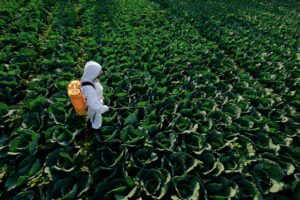As the series on algal biomass as a sustainable source of animal feed draws to a close, it is crucial to take a final glance at the potential and benefits of this innovative solution to the challenges of modern livestock farming. With the world population expected to reach 9.7 billion by 2050, the demand for animal protein is projected to increase by over 70%. This necessitates an urgent need for sustainable animal feed sources that are both environmentally friendly and economically viable. Algal biomass presents a promising alternative in this regard.
Recap of the Potential and Benefits
Algae, microscopic photosynthetic organisms that grow in water, have an untapped potential as a source of nutritious animal feed. They are rich in proteins, fatty acids, vitamins, and minerals necessary for healthy animal growth and development. Their cultivation does not compete with traditional crop farming for arable land, making them a sustainable choice.
The use of algal biomass in animal feed has several benefits. Firstly, it provides a high-quality protein source. Some species of algae contain up to 60% protein content, which is higher than that of soybeans, the current primary source of protein in animal feed. Moreover, the amino acid profile of algal proteins is often superior to other plant proteins.
Secondly, algae are rich in omega-3 fatty acids which are essential for animal health but are typically deficient in traditional animal feeds. These fatty acids improve the quality of meat and eggs produced, making them healthier for human consumption.
Thirdly, algal biomass production has a lesser environmental impact compared to traditional feed crops like corn and soybean. Algae can be grown on non-arable land using saline or wastewater, thereby conserving freshwater resources. They also absorb carbon dioxide during photosynthesis, contributing to greenhouse gas mitigation.
Future Prospects for the Use of Algae in Animal Feed Production
Despite its immense potential and benefits, the use of algal biomass as animal feed is still in its nascent stages. However, future prospects appear promising given recent advancements in research and technology.
One area of focus is enhancing the economic viability of algal biomass production. While algae cultivation costs have significantly reduced over the years due to technological advancements, they still remain relatively high compared to conventional feed crops. Continued research and innovation could further bring down these costs making algae-based feeds more competitive.
Another focus area is improving the digestibility and nutrient availability of algal biomass for animals. Some species of algae have cell walls that are difficult for animals to digest. Research into processing methods such as mechanical disruption or enzymatic treatment could potentially enhance nutrient absorption.
Regulatory approval is another key factor that will influence the future use of algal biomass as animal feed. As new data emerges on its safety and nutritional value, regulatory bodies worldwide will need to update their guidelines accordingly.
In conclusion, while challenges exist in realizing the full potential of algal biomass as a sustainable source of animal feed, they are not insurmountable. With ongoing research and technological advancements, algae could very well become a mainstay in sustainable livestock farming practices globally.

